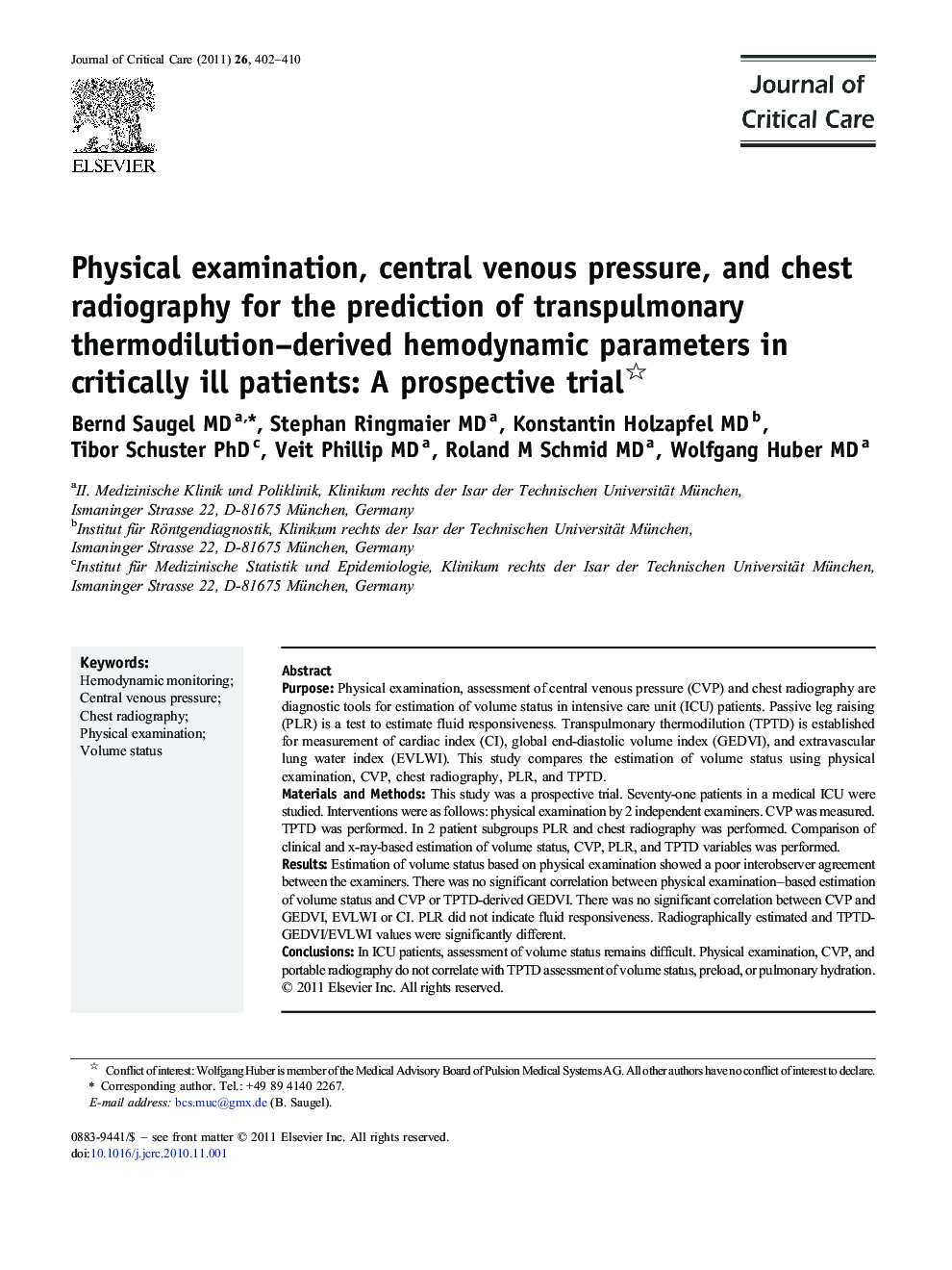| Article ID | Journal | Published Year | Pages | File Type |
|---|---|---|---|---|
| 5886893 | Journal of Critical Care | 2011 | 9 Pages |
PurposePhysical examination, assessment of central venous pressure (CVP) and chest radiography are diagnostic tools for estimation of volume status in intensive care unit (ICU) patients. Passive leg raising (PLR) is a test to estimate fluid responsiveness. Transpulmonary thermodilution (TPTD) is established for measurement of cardiac index (CI), global end-diastolic volume index (GEDVI), and extravascular lung water index (EVLWI). This study compares the estimation of volume status using physical examination, CVP, chest radiography, PLR, and TPTD.Materials and MethodsThis study was a prospective trial. Seventy-one patients in a medical ICU were studied. Interventions were as follows: physical examination by 2 independent examiners. CVP was measured. TPTD was performed. In 2 patient subgroups PLR and chest radiography was performed. Comparison of clinical and x-ray-based estimation of volume status, CVP, PLR, and TPTD variables was performed.ResultsEstimation of volume status based on physical examination showed a poor interobserver agreement between the examiners. There was no significant correlation between physical examination-based estimation of volume status and CVP or TPTD-derived GEDVI. There was no significant correlation between CVP and GEDVI, EVLWI or CI. PLR did not indicate fluid responsiveness. Radiographically estimated and TPTD-GEDVI/EVLWI values were significantly different.ConclusionsIn ICU patients, assessment of volume status remains difficult. Physical examination, CVP, and portable radiography do not correlate with TPTD assessment of volume status, preload, or pulmonary hydration.
